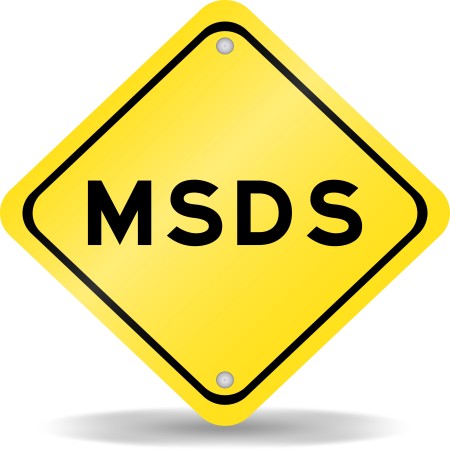Understanding MSDS for Chemical Products in International Trade
Introduction:
When it comes to manufacturing, exporting, and transporting chemical products, ensuring safety is of utmost importance. The Material Safety Data Sheet (MSDS) is a critical document that plays a vital role in providing comprehensive safety information about these products. Whether they are hazardous materials or ordinary goods, some products require an MSDS report. Shippers and freight forwarders often rely on the MSDS to make informed decisions about accepting consignments.
MSDS stands for Material Safety Data Sheet, which provides essential safety information about chemical products and materials. It is also known as a “Safety Data Sheet” or “Chemical Safety Data Sheet.” The scope of the MSDS covers not only materials but also products that contain certain materials, especially those with chemical components.
2. MSDS vs. SDS: Are They the Same?
In some countries, especially in Europe, MSDS is commonly referred to as SDS, which stands for “Safety Data Sheet.” The term “Material” is omitted from the acronym to encompass a broader range of products, not just materials. In essence, both MSDS and SDS refer to the same type of document.

A comprehensive MSDS typically contains the following sections:
- Product Identification: Information about the chemical product and the company producing it.
- Hazard Identification: Identification of potential hazards associated with the product.
- Composition/Ingredients: A list of all ingredients and their percentage composition in the product.
- First Aid Measures: Instructions for providing first aid in case of exposure or ingestion.
- Fire Fighting Measures: Guidance on handling fires involving the substance.
- Accidental Release Measures: Procedures for containing and cleaning up spills or leaks.
- Handling and Storage: Guidelines for safe product handling and storage.
- Exposure Control/Personal Protection: Recommendations for protective equipment during handling.
- Physical and Chemical Properties: Details about the product’s appearance and physical properties.
- Stability and Reactivity: Information about the product’s stability and potential reactions.
- Toxicology Information: Data on the product’s health hazards from exposure.
- Ecological Information: Information on the product’s impact on the environment.
- Disposal Considerations: Guidelines for proper disposal of the product and packaging.
- Transportation Information: Details regarding transportation regulations and requirements.
- Regulatory Information: Compliance information related to regulations and standards.
- Other Information: Any additional relevant information not covered in previous sections.
MSDS is commonly required in sea freight because chemical products usually require this documentation. It helps carriers and freight forwarders make informed decisions about whether the product is suitable for sea transportation and what measures should be taken to ensure safe handling and shipment. Unlike air freight, which may require an Identification and Classification Report for Air Transport of Goods, there is no equivalent requirement for sea freight.
MSDS serves several crucial purposes in the context of international trade and product handling. When booking cargo for specific goods during export, carriers (shipping companies) may request MSDS. It may also be required during customs clearance, and foreign clients might ask for it as well.
In reality, everyone who comes into contact with or is potentially exposed to the cargo (including personnel at warehouses, terminals, and those involved in loading and unloading) needs access to the MSDS. This is because they must follow the guidance and instructions provided in the MSDS to perform the correct operations and handle any emergencies, such as package damage or leakage. Without the MSDS, it is challenging to ascertain the situation, potentially delaying rescue efforts, and leading to severe consequences. The Tianjin Port explosion incident serves as a profound lesson, where improper firefighting measures resulted in more significant casualties.
Note: MSDS is not a detection report, an identification report, or a certification project. It is simply a technical document, fundamentally different from an Identification and Classification Report for Air Transport of Goods used in air freight.
6. What is the difference between SDS and Identification for Air/Sea Transport?
- Manufacturers can develop MSDS based on product information and relevant laws and regulations. If a manufacturer lacks expertise or resources in this area, they can commission a professional company to create the MSDS. In contrast, Identification for Air Transport must be issued by a specialized appraisal company recognized by the Civil Aviation Administration.
- An MSDS corresponds to a specific product and does not have an expiration date. As long as the product remains the same, the MSDS can be used continuously unless there are changes in laws, regulations, or newly discovered hazards. In such cases, the MSDS must be updated based on the new requirements or risks.
(In contrast, Identification for Air Transport has an expiration date and is usually only valid for the current year. It cannot be used across different years.)
- Identification for Air Transport generally requires samples to be sent to the appraisal company for professional testing, and then a report is issued. If sending samples is inconvenient, the appraisal company’s experts can conduct on-site inspections and then provide the report. The validity of the Identification for Air Transport typically lasts for the current year, and after crossing into the new year, it usually needs to be renewed.
It is essential to distinguish between MSDS and Identification for Air Transport, as they serve different purposes and have distinct characteristics.
The Material Safety Data Sheet (MSDS) is a comprehensive and essential document, particularly for chemical products in international trade. It provides vital safety information, enabling informed decision-making during product handling, transportation, and storage. MSDS plays a crucial role in promoting safety and accountability in the chemical industry, ensuring the well-being of all involved parties, and preventing potential accidents or mishaps.

